Rules For Ray Diagrams


Rules For Ray Diagrams
Representation of Images Formed by Spherical Mirrors Using Ray Diagrams:
Many rays of light are coming from the point object or an extended object in all directions.The reflection of light follows the same two rules for all rays. The image of the object is formed at the intersection of the reflected rays To construct a ray diagram in order to locate the image of an object, it is more convenient to consider only two rays. The intersection of at least two reflected rays gives the position of image of the point object.
The following rays can be considered for locating the image
1.The rays coming parallel to the principal axis, pass through the focus after reflection in concave mirror or appear to come from focus in the case of convex mirror.
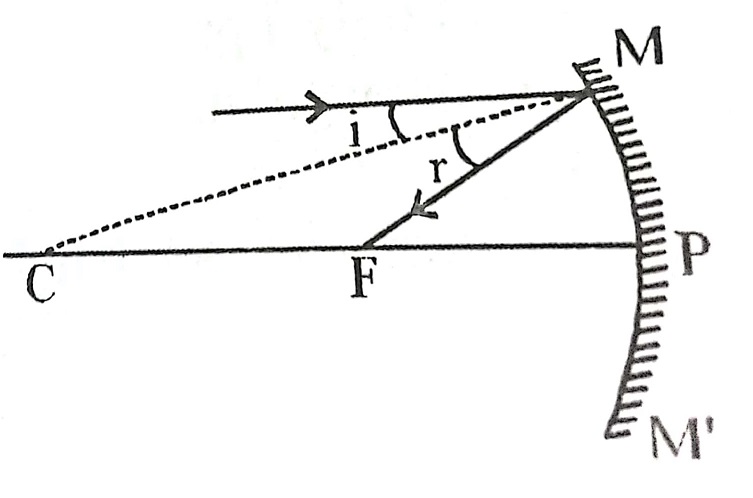 |
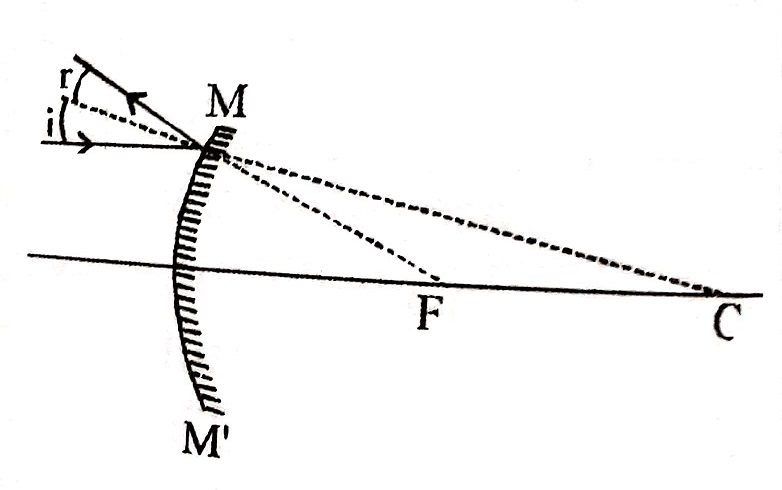 |
2. The rays coming through the focus of a concave mirror or coming towards focus of a convex mirror, become parallel to principal axis after reflection from the mirror.
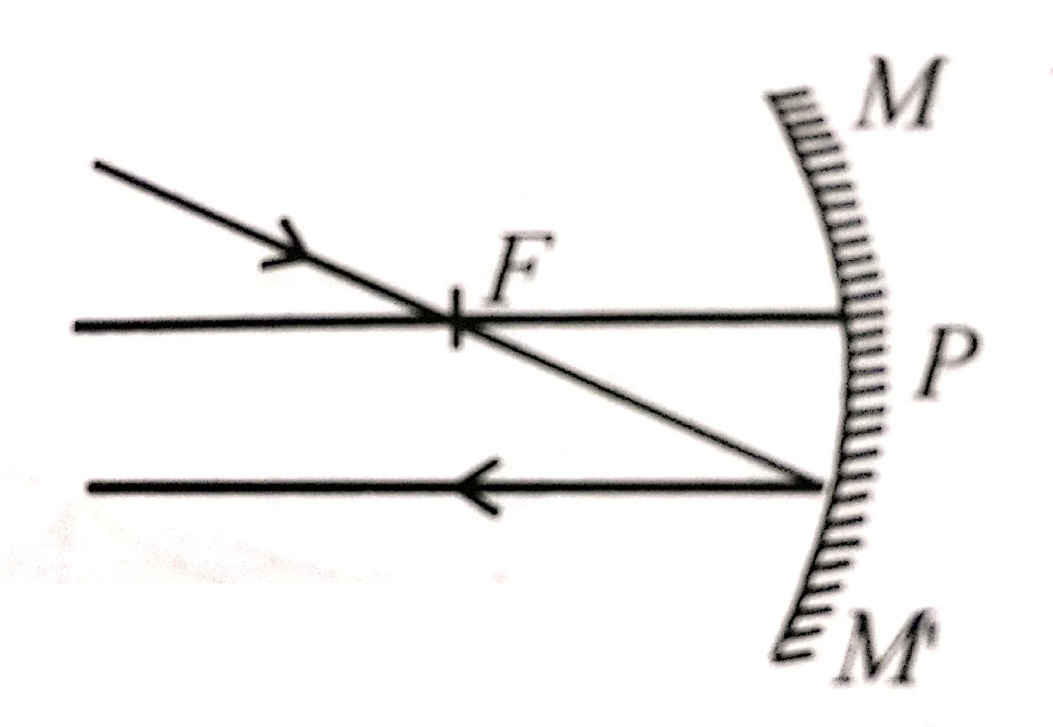 |
 |
3. A ray coming through centre of curvature of a concave mirror or towards the direction of centre of curvature of a convex mirror, reflects back along the same path on striking the mirror surface.
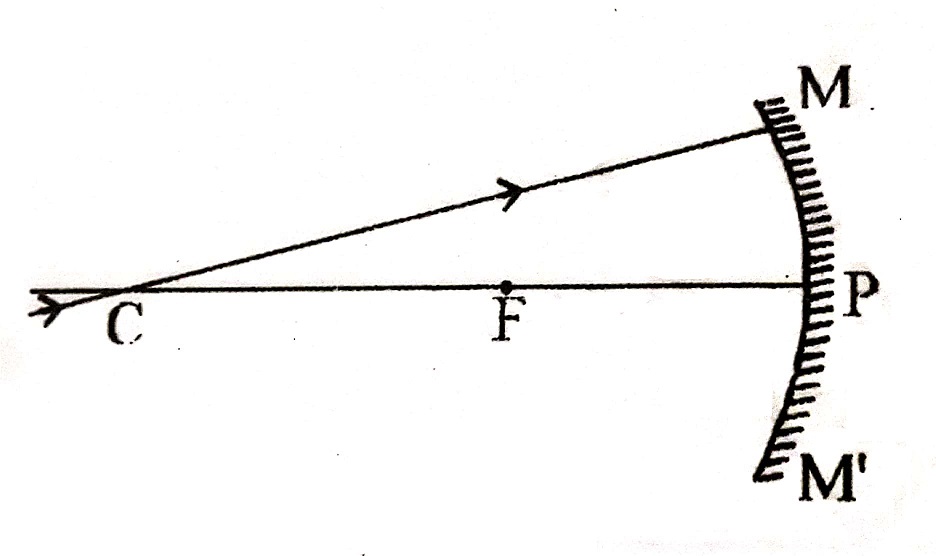 |
 |
4. A ray incident obliquely to principal axis towards a pole P of the concave or convex mirror is reflected obliquely , following the laws of reflection. i.e., <i = <r.
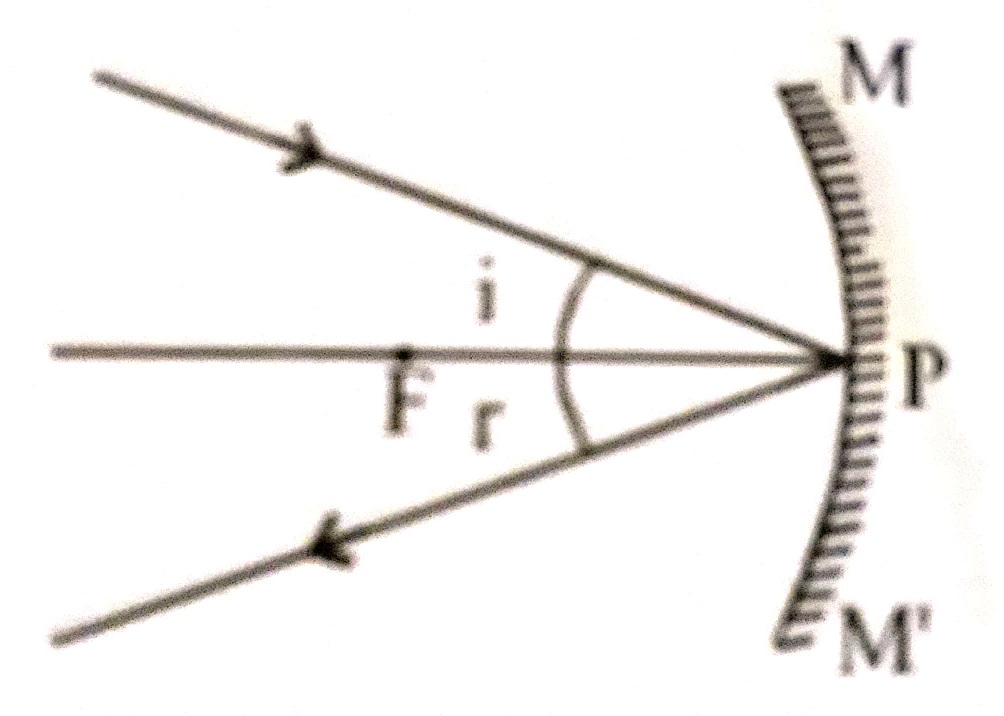 |
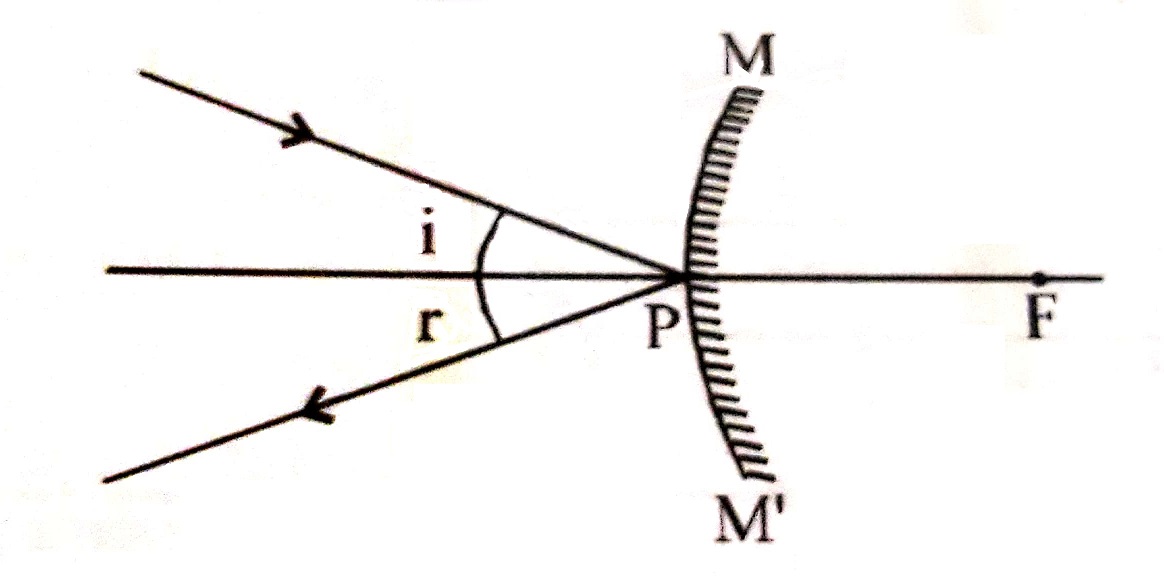 |
Point Object On the Principal Axis:
When the point source is placed at the principal axis of a spherical mirror. The ray along the principal axis will fall normally on the mirror and will retrace its path after reflection. Any other ray which will fall on the mirror will be reflected back (after projection) will cut the principal axis. The image of the point source is formed at that point on the principal axis.
Extended Object Placed Perpendicularly On the Principal Axis:
When the extended object is placed perpendicularly at the principal axis of a spherical mirror, the image of the extended object can be formed by locating the images of the individual point of the object. We can find the whole image by just locating the image of the top and the bottom of the object.
The ray along the principal axis will fall normally on the mirror and will retrace its path after reflection. Any other ray which will fall on the mirror will be reflected back (after projection) will cut the principal axis. The image of the point source is formed at that point on the principal axis.
The rays coming through the_______________ of a concave mirror or coming towards ______________ of a convex mirror, become parallel to principal axis after reflection from the mirror. | |||
| Right Option : C | |||
| View Explanation | |||
Which of the following are correct : (a) The rays coming parallel to the principal axis, pass through the focus after reflection in concave mirror. (b) The rays coming through the focus of a concave mirror or coming towards focus of a convex mirror, become parallel to principal axis after reflection from the mirror. (c) A ray coming through centre of curvature of a concave mirror, reflects back along the same path on striking the mirror surface. | |||
| Right Option : D | |||
| View Explanation | |||
Which of the following are correct : (a) When the extended object is placed perpendicularly at the principal axis of a spherical mirror, the image of the extended object can be formed by locating the images of the individual point of the object. (b) The rays coming parallel to the principal axis, pass through the focus after reflection in concave mirror or appear to come from focus in the case of convex mirror. | |||
| Right Option : C | |||
| View Explanation | |||
Students / Parents Reviews [20]
It has a great methodology. Students here can get analysis to their test quickly.We can learn easily through PPTs and the testing methods are good. We know that where we have to practice

Barkha Arora
10thIn terms of methodology I want to say that institute provides expert guidence and results oriented monitering supplements by requsite study material along with regular tests which help the students to improve their education skills.The techniques of providing education helps the students to asses...

Aman Kumar Shrivastava
10thBeing a parent, I saw my daughter improvement in her studies by seeing a good result in all day to day compititive exam TMO, NSO, IEO etc and as well as studies. I have got a fruitful result from my daughter.

Prisha Gupta
8thIt was a good experience with Abhyas Academy. I even faced problems in starting but slowly and steadily overcomed. Especially reasoning classes helped me a lot.

Cheshta
10thMy experience was very good with Abhyas academy. I am studying here from 6th class and I am satisfied by its results in my life. I improved a lot here ahead of school syllabus.

Ayan Ghosh
8thI have spent a wonderful time in Abhyas academy. It has made my reasoning more apt, English more stronger and Maths an interesting subject for me. It has given me a habbit of self studying

Yatharthi Sharma
10thUsually we see institutes offering objective based learning which usually causes a lag behind in subjective examinations which is the pattern followed by schools. I think it is really a work of planning to make us students grab the advantages of modes of examination, Objective Subjective and Onli...

Anika Saxena
8thMy experience with Abhyas Academy has been very good. When I was not in Abhyas whenever teacher ask questions I could not speak it confidently but when I came in Abhyas, my speaking skills developed and now I am the first one to give the answer of teachers question.

Upmanyu Sharma
7thOne of the best institutes to develope a child interest in studies.Provides SST and English knowledge also unlike other institutes. Teachers are co operative and friendly online tests andPPT develope practical knowledge also.

Aman Kumar Shrivastava
10thMy experience with Abhyas academy is very good. I did not think that my every subject coming here will be so strong. The main thing is that the online tests had made me learn here more things.

Hiya Gupta
8thAbhyas academy is great place to learn. I have learnt a lot here they have finished my fear of not answering.It has created a habit of self studying in me.The teachers here are very supportive and helpful. Earlier my maths and science was good but now it has been much better than before.

Barkha Arora
10thMy experience with Abhyas academy is very nice or it can be said wonderful. I have been studying here from seven class. I have been completing my journey of three years. I am tinking that I should join Abhyas Academy in tenth class as I am seeing much improvement in Maths and English

Hridey Preet
9thThird consective year,my ward is in Abhyas with nice experience of admin and transport support.Educational standard of the institute recumbent at satisfactory level. One thing would live to bring in notice that last year study books was distributed after half of the session was over,though study ...

Ayan Ghosh
8thAbhyas institute is one of the best coaching institute in the vicinity of Ambala Cantt area. The teachers of the institute are well experienced and very helpful in solving the problems of the students.The good thing of the institute is that it is providing extra classes for the students who are w...

Aman Kumar Shrivastava
10thAbhyas is good institution and a innovative institute also. It is a good platform of beginners.Due to Abhyas,he has got knoweledge about reasoning and confidence.My son has improved his vocabulary because of Abhyas.Teacher have very friendly atmosphere also.

Manish Kumar
10thIt was good as the experience because as we had come here we had been improved in a such envirnment created here.Extra is taught which is beneficial for future.

Eshan Arora
8thWe started with lot of hope that Abhyas will help in better understnding of complex topics of highers classes. we are not disappointed with the progress our child has made after attending Abhyas. Though need to mention that we expected a lot more. On a scale of 1-10, we would give may be 7.

Manya
8thAbhyas institute is one of the best coaching institute in the vicinity of Ambala cantt.The institute provides good and quality education to the students.The teachers are well experienced and are very helpful in solving the problems. The major advantages of the institute is extra classes for weak...

Shreya Shrivastava
8thAbout Abhyas metholodology the teachers are very nice and hardworking toward students.The Centre Head Mrs Anu Sethi is also a brilliant teacher.Abhyas has taught me how to overcome problems and has always taken my doubts and suppoeted me.

Shreya Shrivastava
8thA marvelous experience with Abhyas. I am glad to share that my ward has achieved more than enough at the Ambala ABHYAS centre. Years have passed on and more and more he has gained. May the centre flourish and develop day by day by the grace of God.
